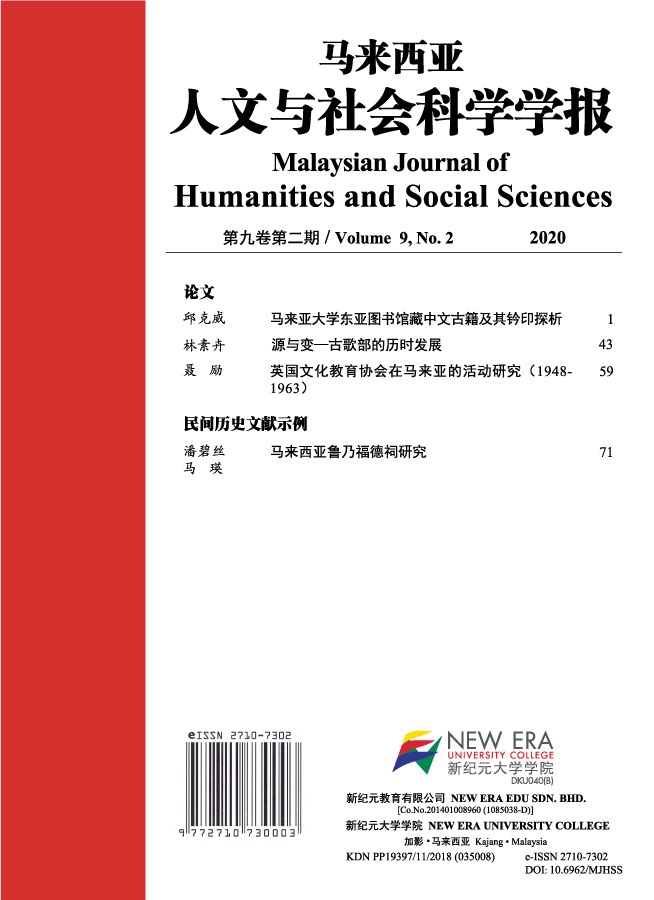源与变一古歌部的历时发展 Sources and Changes一Diachronic Development of Ancient Ge (歌) Rhyme
Keywords:
歌部、方言层次、音变、比较法, Ge (歌) rhyme, Dialect layer, Tone change, Comparison methodAbstract
论文以段玉裁古音十七部的歌部为研究原点,通过各家对古音的拟测以及中古《集韵》和《广韵》的反切,作为语音分合的道路,加上现代方言的相互对照,双线比较后描绘语音的演变路线。方言材料以闽语方言和山西方言为主,视作南北方音的对比,发现两地方音在部分字音上有相当近似的音读,而判定语音的演变具有一定的规律性。歌部在各家的上古音分部上,属千较无争议的韵部,但有部分学者将之与支部结合,归作一
类。不可否定的是,歌部与支部关系密切,在现代方言当中还能找到语音交融的例子。上古以后,歌部入歌戈麻韵,语音的分化趋逾复杂,方音的异读是最有效的线索,去探求语变的轨迹。通过比较”也、蛇”音读,发现支部和麻韵音变的“链移”1情况。从“麻“得声的字组,音变情况相当复杂,但与中古韵部反映契合。以“罗、果”得声的字组,各方言语音韵部开合口没有一致性,故认为其语音分裂最早的起点主要元音很可能是o 。
The thesis takes Ge (歌) rhyme from Duan Yucai's seventeen-segment ancient rhymes as the origin of research. Through the simulation of ancient tone by different experts and the fanqie (反切) of "Ji Yun" and "Guang Yun" of the Middle Ages, it serves as the path of phonetic separation and integration of tones. This coupled with the cross reference of modem dialects enables the two-line comparison which depicts the evolution of tone changes. The dialect materials are mainly Min dialect and Shanxi dialect, which are regarded as a contrast between the northern and southern tones. It is found that the two local sounds have fairly similar in part of their phonetic tones, and this determines that the evolution of the pronunciation has certain regularity.
Ge (歌) rhyme belongs to the uncontroversial rhymes in the ancient tone divisions of various families, but some scholars have combined them with Zhi (支) rhyme and classified them as one category. It is undeniable that Ge (歌) rhyme and Zhi (支) rhyme are closely related, and examples of phonetic blending can still be found in modem dialects. Since ancient times, Ge (歌) rhyme belonged to Ge Ge Ma (歌戈麻) rhyme, and the differentiation of sounds has become more and more complicated. The different
pronunciations of dialects are the most effective clues to explore the trajectory of tone changes. By comparing the pronunciation of "Ye (也), She (蛇)”, the "chain shift" can be found in the tone changes of Zhi (支) rhyme and Ma (麻) rhyme. From the word group of "Ma (麻)”, the sound change is quite complicated, but it is consistent with the Middle Ancient rhymes. In the group of words with "Luo (罗) and Guo (果)”, the opening and closing of the phonological rhyme of the dialects are not consistent. Therefore, it is believed that the earliest starting point of the phonetic split is most likely the main vowel — O.




